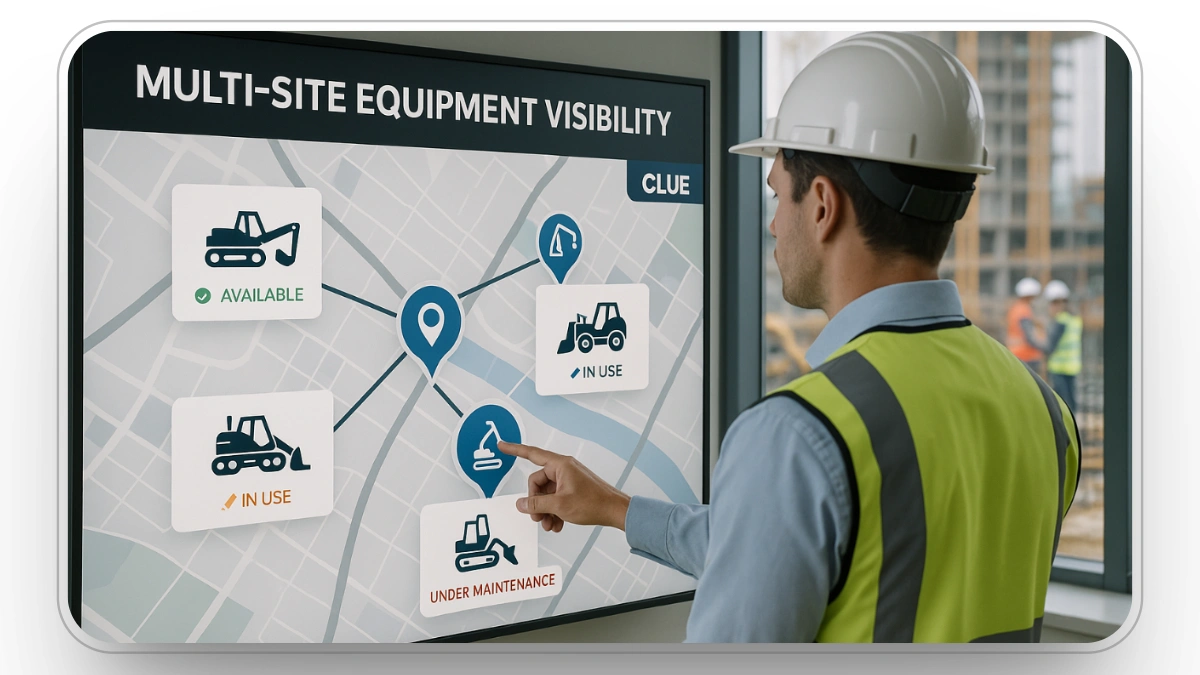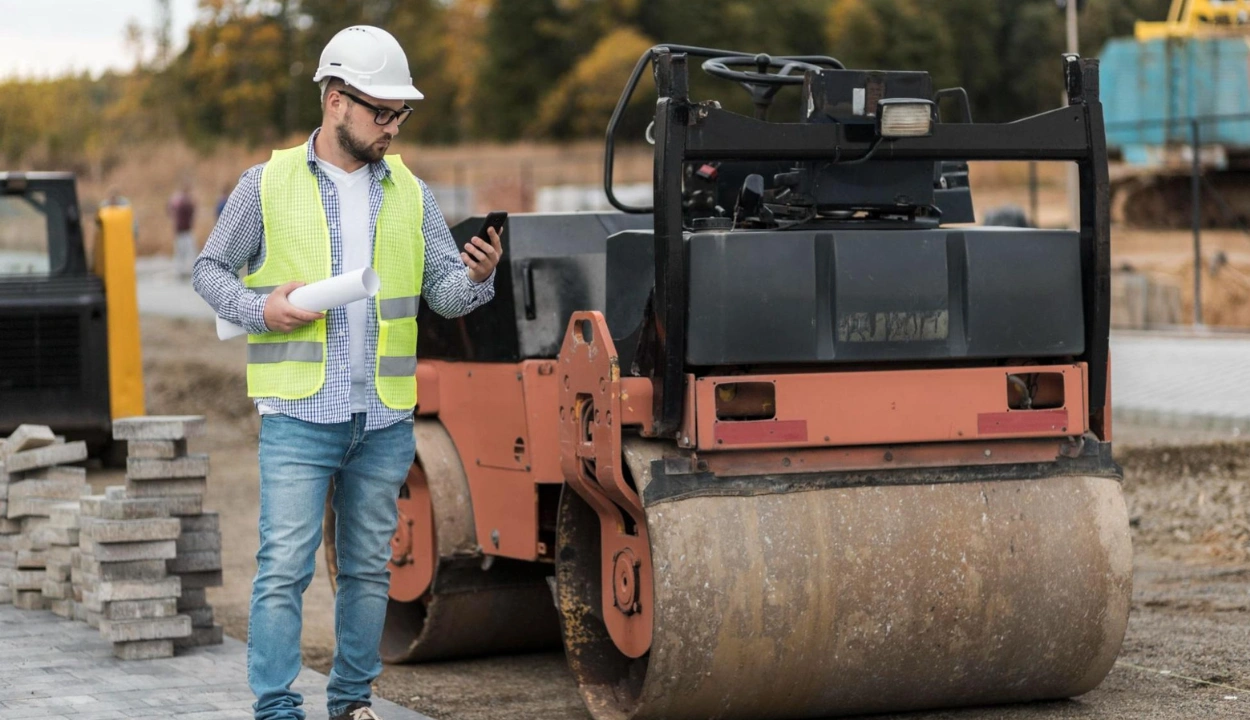8 Best Practices for Effective Inventory Management
Every moving element in construction inventory management acts as a domino; a minor hiccup in the supply chain can result in significant delays, leading to tension and disruption on the job site and leaving clients dissatisfied.
These disruptions not only affect project timelines but can also impact overall project costs and team morale.
Such events frequently result in clients questioning their commitment and possibly finding other companies for future contracts.
The key to avoiding these errors is robust construction inventory management software.
These solutions keep important supplies in stock while maintaining a smooth pipeline, ensuring your projects stay on track and reducing costly delays.
8 Key Best Practices in Inventory Management

1. Leverage Tech for Equipment Inventory Management
Not long ago, construction was one of the most underdeveloped industries when it came to technological advancements.
Recently, however, the construction industry has had a breakthrough thanks to high-tech software.
Technological advancements have simplified and improved numerous building operations, including construction inventory management, from drone technology to specialized project management software.
You can track inventory levels faster and conveniently with the several options for construction equipment inventory management software available.
Ideally, you want an application to manage inventory across multi-location sites, expedite material and equipment categorization, and track inventory levels as they change.
Real-time tracking is critical since construction supplies and equipment are frequently distributed across many sites.
You can monitor inventories in real time by using barcodes, GPS tags, or IoT-enabled sensors.
Clue's construction inventory management solution enables construction firms to manage equipment, track it in real time, and minimize cases of theft/loss effectively, all through the use of GPS and telematics.
The system is more effective for companies with many branches and projects in different locations since the manual tracking of the heavy equipment and other resources may consume a lot of time and cause some delays.
2. Conduct Regular Inventory Audits, Not Just Cycle Counts
Inaccurate data can contribute significantly to problems with building site inventories by causing managers to make poor decisions.
While cycle counts are useful for regularly monitoring high-usage items, conducting more comprehensive audits at least quarterly is critical.
Inaccurate record-keeping can lead to unanticipated material and supply shortages and financial losses in building projects, both of which can negatively impact your company's bottom line.
To ensure that you have accurate data on inventory levels, you must regularly inspect the inventory that is on hand.
This covers not just your building supplies but also your equipment, tools, and vehicles.
Clue's inspection feature aids in inventory audits by providing checklists, forms, and real-time tracking of assets and equipment.
This solution moves well beyond minimal cycle counts, allowing for compliant, efficient, and paperless inspections that can be easily folded into existing processes.
3. Establish a Multi-Site Equipment Hub with Real-Time Inventory Visibility

When a company operates across multiple construction sites, coordinating the inventory of machinery can become highly complex.
To streamline this process, it's essential to centralize the tracking of equipment locations and implement real-time monitoring systems.
By integrating GPS-enabled systems or IoT devices, companies can track the exact location and condition of each piece of equipment in real-time.
This approach simplifies the transportation of machinery between sites, ensuring swift and efficient asset movement.
With real-time insights, companies can make informed decisions about equipment allocation, reducing downtime and enhancing overall project efficiency.
4. Apply KPIs to Measure Inventory Efficiency
Create a set of measurement metrics they can use to evaluate performance, including turnover ratio, expense on storage, frequency of stockouts, and time taken to complete an order.
They include KPIs that assist in tracking how on-site inventory management can be optimally enhanced to eliminate areas of inefficiency and facilitate measurements.
Make sure that the performance of these metrics is constantly analyzed by your team and changes to the strategies are made accordingly.
- Inventory Turnover Rate
- Storage Costs
- Stockout Frequency
- Order Lead Time
- Equipment Utilization Rate
- Maintenance Cost per Equipment Unit
- Inventory Accuracy
- Asset Condition Index
5. Categorize Materials by Criticality and Usage Patterns

High-Priority Equipment (Category A)
These are strategic assets that experience high usage and form part of the fundamental activities of the construction site.
Equipment in this category must be easily accessible, especially as their unavailability could govern crucial construction processes.
- Examples: Cranes, excavators, bulldozers, and concrete mixers.
- Management Strategy: Maintain these items in constant stock and have check-up and repair schedules to minimize time of dealings with the equipment.
Medium-Priority Equipment (Category B)
They are also important but not necessarily in constant demand. Even though they are helpful in certain tasks, one may not require them in all the phases of the project.
These items should not be stocked excessively but they need to be easily accessible whenever they are required to ensure easy and fast progression.
- Examples: Bar, pick-up trucks, digging tools, ramps, diggers, generators.
- Management Strategy: It is advisable to carefully note its usage patterns and hold a buffer stock but that should depend on the phase of the project.
Low-Priority Equipment (Category C)
These are tools that may not be used as often or not used until the final stages of the project’s completion.
They can be sourced in comparatively low quantities and at the time when they are needed because they do not pertain to frequent use within the organization.
- Examples: Painting, finishing, and other tools and equipment including small power tools such as drills and sanding machines.
- Management Strategy: It should be stored in small quantities as part of storage cost reduction while ordering should be done under JIT.
6. Leverage Data Analytics for Informed Decision-Making
Data analytics provide invaluable insights that maximize resource allocation and guide strategic decisions.
By leveraging data from construction inventory management software, project managers can make well-informed decisions, identify patterns, and adjust to evolving project specifications.
With the help of data analytics, you can see an in-depth overview of inventory levels and spot trends and patterns in the use of materials.
Construction teams can more precisely predict future requirements by analyzing past data and consumption patterns.
This helps to ensure that stock levels meet project objectives without overstocking or understocking.
Analytics also enable proactive decision-making by giving real-time visibility into inventory status.
By keeping an eye on inventory levels, tracking material movement, and spotting possible bottlenecks or shortages early on, project managers can reduce risks and keep the project moving forward.
7. AI and Automation Capabilities
The potential of AI and automation in construction inventory management is transformative, enhancing both the speed and accuracy of routine tasks while providing deeper insights into business patterns.
AI can automatically track batch numbers, count inventory, and ensure that compliance certificates and other critical documents are always up to date.
Furthermore, modern AI systems can learn from accumulated data and analyze current market trends, providing highly accurate inventory forecasts.
This helps businesses avoid the pitfalls of overstocking or understocking essential materials, optimizing inventory levels to meet demand more effectively and reducing unnecessary costs.
- Tracking Batch Numbers and Inventory Counting: AI and automation systems can accurately monitor batch numbers and automatically count inventory, reducing manual errors and improving efficiency.
- Compliance Certificates: Automating the tracking and storage of compliance certificates ensures that relevant documentation is always up-to-date and easily accessible during audits.
- Historical Data Analysis and Forecasting: Advanced AI can analyze past usage trends and current demands to forecast future inventory needs. This helps in avoiding overstocking and understocking, improving cost management, and ensuring that the right amount of equipment or materials is available when needed.
8. Plan for Seasonal and Market Variability
Cost estimates are affected by seasonal influences and fluctuating market costs in construction projects.
Based on this variability, modify your approach to selecting equipment and how you use the equipment.
For example, in periods of low production, you can scale down the number of equipment at the site or remove some machinery for fear of early degradation.
With market trend data, you can predict the future changes in equipment prices and perhaps time your buying or renting of equipment appropriately.
Final Thoughts
Construction inventory management software excels at one thing: it helps you manage your inventory.
However, it becomes yet another tool, another piece of the jigsaw, that you must integrate into your workflow.
Create, expand, automate, integrate, deploy, and perform real-time inventory analysis and reporting with the help of modern construction inventory software like Clue.
Construction businesses can optimize their operations, guarantee project success, and gain a competitive advantage in the dynamic building industry by implementing contemporary construction inventory management solutions combined with the 8 inventory management best practices mentioned above.
FAQs
What are some key strategies for improving accuracy in construction inventory management?
Improving accuracy in construction inventory management involves several strategies, including implementing real-time tracking systems, conducting regular physical counts, and using automated inventory management software. By integrating barcode scanning or RFID technology, you can reduce manual errors and ensure that inventory data is consistently updated.
How can construction companies effectively manage inventory turnover and avoid overstocking?
To manage inventory turnover and avoid overstocking of heavy assets, construction companies should implement strategies such as utilizing just-in-time asset management, establishing accurate reorder points based on historical usage and project needs, and leveraging predictive analytics for forecasting demand.
What are the 3 major inventory management techniques?
The push technique, pull technique, and just-in-time approach are the three most widely used inventory management strategies. By using these tactics, businesses can meet client demands in several ways.
What are the 3 main categories of construction inventory?
Contractors are required to oversee three primary areas of inventory in general:
- Consumables
- Building materials
- Tools and equipment
What is ABC analysis in inventory management?
Inventory is divided into three categories by the ABC analysis, with "A" items being the most crucial and "C" items being the least crucial. Selecting which inventory items to prioritize for stock levels and reordering can be done with the use of the ABC analysis.
Transform Your Equipment Management













